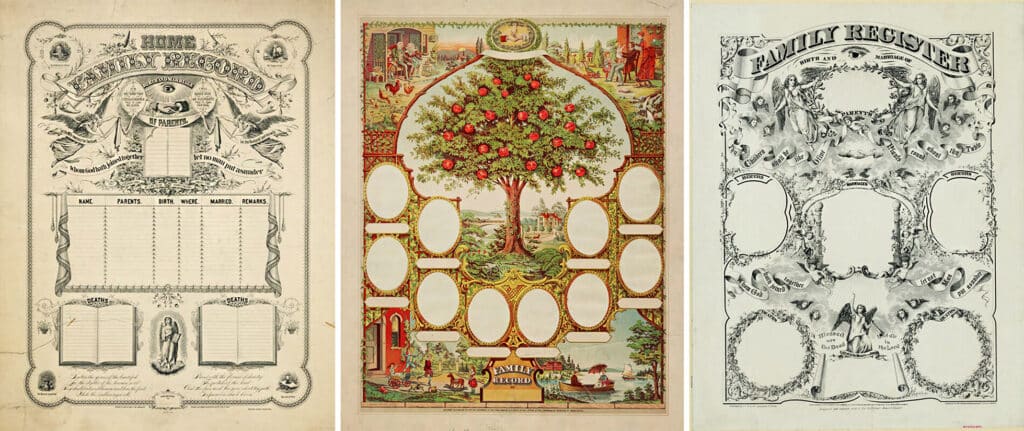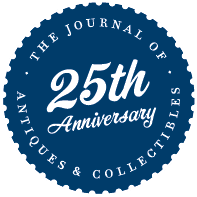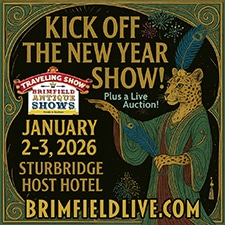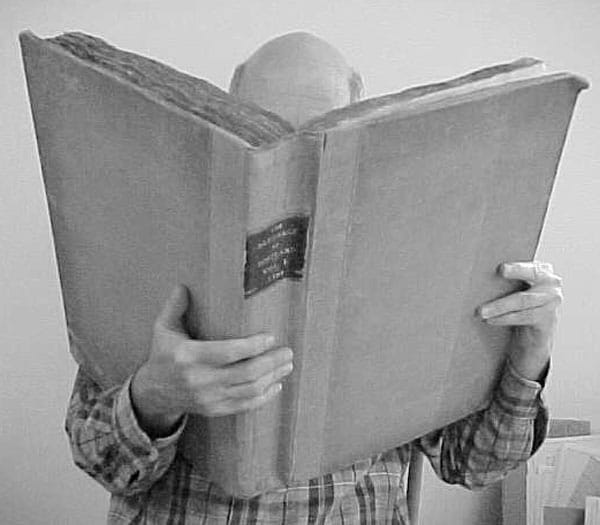Half of an Old Bible
by James Dawson
Someone came in the other day with a book to sell. It was a Bible printed in 1859. The leather binding was in okay condition but not great, as the labels on the spine, which identified the book, had fallen off. This was an average-size book and not one of those big family bibles that people buy if they are in good shape but seldom buy if they are in poor condition because repairing or rebinding leather books may cost more than the book would be worth.

She pulled out a paper and proudly pointed out that the family whose book this was could trace their lineage back to 1687. I pointed out that this book was printed in 1859, not 1687, and said that a book like this is most important to that family, and if they didn’t want it anymore, then who else would?
Those big family Bibles often have genealogical information in them. Pages where “Births, Deaths, and Marriages” would be listed. In the days before birth certificates, in some cases, this may be the only written record of someone’s life and death. Information like this is invaluable to the family. Also, genealogical and historical societies just want to copy down the information; they probably don’t want the book itself.
A family Bible like this would be interesting if it was owned by someone famous, but all Bibles were owned by someone, and if they weren’t famous or infamous, then it really wasn’t a big deal.
Actually, when you think about it, all of us can trace our lineage back to the beginning of the human race, so one person’s family is exactly as old as any other person’s family. Family Bibles do become separated from their family through the years. It’s a shame when one branch of the family gets rid of something that another branch of the family would treasure.
But not everyone cares about history – not even their own.
If you do have an old family Bible that is falling apart, then you should get it to a bookbinder who can either repair it if there is enough of the old binding to save or put it into a modern binding if not. In cases like this, it is worth the money spent because you are preserving family history and not repairing something for resale.
As I was looking at the book, I noticed that it said “Volume One” on the title page, and I flipped to the last page, and sure enough, this book ended about halfway. So it was literally half of a bible.
Sometimes, you see cases where both volumes of a two-volume set will have been bound together. The publisher then had the option of binding the two volumes separately or binding the two volumes together to be sold in a cheaper version. One book costs less than two.
You can generally tell if a book is two or more volumes bound as one because halfway into the book, you will see another title page after where volume one ended and where volume two began. Usually, the page numbers will also start over – volume two starts with its own page one, and so on to the end. Another thing to check is that, normally, only the last volume will have the words “The End” at the end. And, normally, the index (if the book has one) will be at the end of the last volume.
Having checked these things, it was definite that this was volume one only and where was the other volume?
I pointed this out to her, and she said that it hadn’t been taken care of like this one; it fell apart, and so she threw it away.
I found it interesting that while she went on and on about how far back the family who owned it could trace their lineage, a fact which in this case meant nothing to me or probably anyone else who might buy the book, she “forgot” to mention that there was supposed to be a volume two with it, a bit of information which was extremely important to me.
I might have bought the book as is, hoping to find the missing volume or sell it to someone who already had the missing volume. But so many books have been printed in so many different versions that finding an exact match may be all but impossible.
There are untold tons of old Bibles around. Almost every family had one, it would seem, as it has been stated many times that the Bible is the biggest-selling book in history. Gutenberg printed the first Bible from moveable type on a printing press in 1456, so an 1859 version is not particularly old for a Bible as far as age goes.
James Dawson has owned and operated the Unicorn Bookshop in Trappe, MD since 1975, when he decided that it would be more fun to buy and sell old books and maps than to get a “real” job. For a born collector like Jim, having a shop just might be another excuse to buy more books. He has about 30,000 second hand and rare books on the shelves, and just about all subjects are represented. He can be contacted at P.O. Box 154; Trappe, MD 21673; 410-476-3838; unicornbookshopMD@gmail.com; www.unicornbookshop.com






